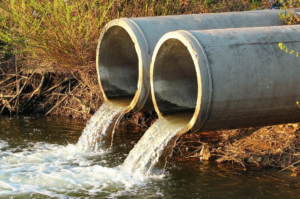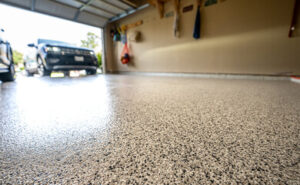If your garage door opens and closes randomly, it could be an issue with the photo eye sensors or an obstruction along the track. Ensure the sensors are clean and properly aligned.

Choosing the right garage door is all about aesthetic variety, durability, energy efficiency and low maintenance. Contact Norman Garage Door for professional help.
A stylish garage door can elevate your home’s curb appeal, impressing visitors and instilling pride in the property. To maximize the impact of a new custom garage door, pair it with other upgrades that boost your home’s visual appeal. These include incorporating pops of color, greenery, water features and exterior lighting.
Adding customized elements to a garage door is an easy and affordable way to transform it into a showstopper. The process can be time-consuming, and homeowners may need to find alternative parking arrangements during the installation. However, a professional installer can streamline the customization process and ensure it meets your expectations.
Custom garage doors can be crafted in a variety of styles, materials and colors to suit any taste. The options are limitless, ranging from classic steel for a sleek modern look to rustic wood for a warm and welcoming aesthetic. A homeowner can also choose from a range of window designs and decorative hardware pieces to create a one-of-a-kind look.
Choosing the right color and material is vital for a garage door to complement the home’s architecture. Many manufacturers offer several stock images of homes with their customizable garage doors, allowing customers to select the one that best matches their preferences. Then, they can experiment with different combinations until they find the perfect design.
In addition to the basic options of size, style, and color, a customizable garage door can be further enhanced with energy efficiency, security and other features. For example, smart openers can be programmed to automatically close the door when you leave the car. They can even be connected to your smartphone for remote access. They are also safer than traditional openers, since they are designed to avoid shackle jamming and are less vulnerable to hacking.
The process of designing a customized garage door can be daunting for an uninitiated homeowner. This is why a qualified professional is necessary to provide guidance, insight and advice. The process involves taking measurements of the garage doorway, determining what type of custom features are desired, and ordering a door tailored to the specifications of the client.
Design
There are many different design options that can improve the look of a garage door. From the materials used to the accessories that can be added, each homeowner can find a look that suits their home and tastes. Some design options can even increase the safety of a garage door, providing peace of mind for homeowners and their families.
The material of a garage door can impact its aesthetics as well as its durability and maintenance needs. Wood doors can add a rustic appeal to homes, while steel is a cost-effective option that resists corrosion. Fiberglass is also an attractive choice that offers a smooth, sleek appearance with a limited number of maintenance requirements. There are also a wide variety of panel designs to choose from. Some styles are exclusive to certain garage door materials or types, but others can be customized with inlaid designs, overlays, and hinge and handle placement.
Opener design options can enhance convenience and accessibility as well. For example, smart openers can integrate with a smartphone app to provide convenient remote control from anywhere with an Internet connection. Others have built-in voice controls that can be activated with popular home assistants like Amazon Alexa or Google Assistant. Some feature an automatic door closing function that will close the garage door after a set time to prevent theft or vandalism.
Depending on the style of garage door, there are also various opener drive systems to consider. The most common is a chain drive, which uses a metal chain to move the trolley as it raises or lowers the door. This system is economical and effective but can be noisier and produce unwanted vibration, making it less suitable for garages located underneath or adjacent to living spaces.
A belt-driven model uses a rubber or polyurethane belt instead of the metal chain, creating a quieter opening and closing experience. They are more expensive than the chain-driven model but require significantly less maintenance. Screw-driven models use a threaded rod to move the trolley, providing greater durability than a belt drive while being quieter than both the chain and belt-driven models.
Energy Efficiency
Insulated garage doors help regulate the temperature within your garage, reducing heat loss in winter and excess heat in summer. This minimizes the reliance on HVAC systems, which can lead to reduced energy consumption and lower electricity bills. Additionally, insulated garage doors reduce outside noises and make the inside of your home more comfortable.
In addition to a high R-value, the type and thickness of insulation used can impact the door’s energy efficiency. The most common option is polystyrene, which comes in rigid panels that manufacturers insert between the steel layers or inside a single-layer steel garage door. It provides an adequate R-value, but it’s not as effective as polyurethane foam.
A high R-value and a properly installed garage door can make a significant difference in your home’s energy consumption and cost. A professional can help you navigate your options and select the right insulated garage door for your needs.
In a time when sustainability is more important than ever, finding ways to conserve energy and limit your carbon footprint has become a priority for many homeowners. As such, they’re looking for innovative solutions to save money and help the environment. From installing new windows to optimizing heating systems, there are a variety of ways you can make your home more energy efficient.
Among them, choosing an insulated garage door is one of the most effective. In contrast to non-insulated garage doors, a triple-layer insulated garage door helps to reduce heat loss, keeping your garage warmer in winter and cooler in summer, while also lowering your utility bills.
A garage door can consume a considerable amount of electricity when in use, even after you’ve closed it. It’s also not uncommon for older models to consume a lot of power when in standby mode, which can add up quickly. A high-efficiency garage door uses less electricity while operating and can have as low as 1 watt of standby power consumption, helping you to significantly cut your energy costs and reduce your environmental footprint. A new, more energy-efficient garage door can also increase your property value and contribute to a greener environment.
Security
We use security features all the time – PINs to unlock phones, facial recognition software for computers and laptops, deadbolts on doors and windows. So it’s important that we think about enhancing the security of our garage door and all other entrance points to our home.
Many newer electrically operated shutters and sectional overhead doors come with an integrated alarm incorporated into the motor which is wired into the mains electricity supply. This is a great deterrent against any would be thief who might be planning to gain entry by lifting up the shutters or breaking open a window. If your existing doors don’t have an alarm fitted a simple magnetic or sensor based alarm can be purchased cheaply online and installed easily.
Consider upgrading your personnel door to an outward fitting, twin skinned steel or uPVC option with multi locking points. Also look at changing to a lock with anti bump, anti snap and anti pick properties rather than the standard euro cylinder that comes fitted. If you have a service door or a door into your house from the garage, make sure these are secure too, and fit an internal door bolt and a deadbolt to the inside of the frame.
Adding some security lighting is another effective deterrent. Installing motion-activated floodlights near your garage doors and windows will shine a literal spotlight on anyone scoping out the area looking for a vulnerable entry point. Similarly, adding tinted security film to your garage windows will obstruct their view of any contents you may have stored in the room and discourage them from trying to break in through those routes.
Regular maintenance and firmware updates will also keep your garage door openers up to date with the latest security patches, reducing the risk of vulnerabilities exploited by hackers. Users are also responsible for safeguarding their remote controls, access codes and passwords, and keeping them in a safe place where they cannot be lost or stolen. If you are not confident with the technical aspect of maintaining and updating your garage door, ask for help from a specialist.



